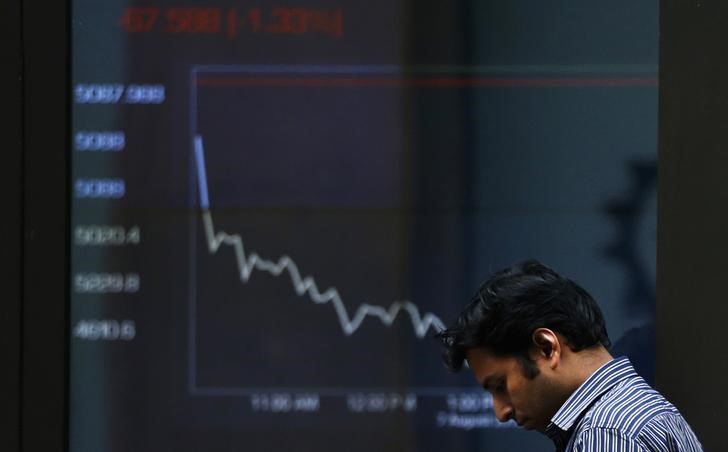The ASX is set for a positive start to the week, with ASX 200 futures up 0.8% higher at 7,983 points.
The ASX200 concluded last week 50 points lower, a 0.63% decline, ending its three-week winning streak. Volatility on Wall Street impacted the local index, with notable sectoral declines. The Energy sector fell by 5.60%, Real Estate by 2.84%, Utilities by 1.44% and Telecommunications (Telcos) by 1.26%.
Conversely, several sectors performed well: Industrials increased by 0.67%, Financials by 0.33%, Health Care by 0.13% and Consumer Discretionary by 0.05%.
At the stock level, Drone Shield Ltd dropped 28.57%, Regis Resources Ltd (ASX:RRL) fell 13.28%, South 32 Ltd decreased by 12.87% and Paladin Energy Ltd (ASX:ASX:PDN) was down 9.64%. In contrast, Iress Ltd surged 16.98%, Insignia Financial Ltd rose 12.18%, Betmakers Ltd increased 7.06% and Polynovo Ltd gained 6.61%.
“This week, the key event on the local data calendar is Wednesday's all-important June 2024 (Q2) CPI, writes IG markets analyst Tony Sycamore.
“The expectation for the June 2024 quarter (Q2) is for headline inflation to rise by 1% QoQ for an annual rate of 3.8%.
"The Trimmed Mean is expected to rise by 1% QoQ, which would see the annual rate of Trimmed Mean inflation remain at 4.0% YoY. If the Trimmed Mean prints at 1.2% or higher next week, it will increase the chances of another RBA rate hike before year-end.
"Otherwise, the RBA is expected to stay on hold at 4.35%. The rates market starts this week, pricing in 5bp or a 20% chance of a 25 bp RBA rate hike in August.”
Over in the US
Despite gains on Friday night following favourable Personal Consumption Expenditures (PCE) inflation data, last week's Wall Street story centred on position unwinding and sector rotation. The tech-heavy Nasdaq 100 extended its decline, spurred by underwhelming earnings reports from Tesla (NASDAQ:TSLA) and Alphabet (NASDAQ:GOOGL). However, small-cap and blue-chip stocks secured solid gains.
On the political front, the weekend was relatively calm compared to the previous two, but significant developments have emerged in the presidential race.
Recent polls conducted after President Joe Biden's withdrawal show Vice President Kamala Harris in a tight race with former President Donald Trump.
The likelihood of a Republican sweep has decreased to approximately 35% from a previous high exceeding 50%. At this stage, these political shifts are more likely to impact specific sectors rather than have broad macroeconomic implications. However, the presidential race remains fluid, with potential for further unexpected developments before its conclusion.
In economic news on Friday, headline PCE inflation edged up 0.1% month-on-month in June, allowing the annual rate to fall to 2.5% from 2.6%. Core PCE rose by 0.2% in June, above expectations of 0.1%, keeping the annual rate steady at 2.6%. The rates market is fully priced for a 25 basis points (bp) rate cut in September, with 66bp of rate cuts priced before year-end.
This week's economic calendar holds an important Federal Open Market Committee (FOMC) meeting, non-farm payrolls, Job Openings and Labor Turnover Survey (JOLTS) job openings and the Institute for Supply Management (ISM) manufacturing Purchasing Managers' Index (PMI). The US second quarter 2024 earnings season continues, with a significant week of earnings reports scheduled from companies including tech giants Microsoft (NASDAQ:MSFT), Meta and Apple (NASDAQ:AAPL).
European sharemarkets
Closed higher on Friday, driven by gains in the construction and materials sectors, which added 1.7%. Notably, France's Vinci saw a 3.5% increase after the highway operator reported first-half revenue growth and margin expansion.
EssilorLuxottica surged 7.4% following the announcement from its CEO that Meta might take a stake in the Ray-Ban maker. Hermes also saw a rise of 3.4% after slightly surpassing second-quarter sales expectations.
The FTSEurofirst 300 index, representing the continent-wide market, climbed 0.9%, ending the week up by 0.6%. In London, the UK FTSE 100 index advanced 1.2% to reach a two-month high, buoyed by earnings optimism. NatWest shares contributed significantly to this gain, jumping 7% as the company raised its outlook. The blue-chip index increased by 1.6% over the week.
On the money
Currencies exhibited mixed movements against the US dollar in European and US trading.
- The Euro rose from US$1.0840 to US$1.0866, settling near US$1.0855 at the US close.
- The Australian dollar fell from US$0.6567 to US$0.6546, ending near US$0.6550.
- The Japanese yen firmed from JPY154.72 per US dollar to JPY153.24, finishing near JPY153.70.
Commodity crunch
Global oil prices dropped 1.5% on Friday due to declining Chinese demand and hopes for a Gaza ceasefire agreement, which could alleviate Middle East tensions and supply concerns.
- Brent crude fell by US$1.24 or 1.5% to US$81.13 a barrel.
- The US Nymex crude shed US$1.12 or 1.4% to US$77.16 a barrel. For the week, Brent fell 1.8%, and Nymex declined 3.7%.
Base metal prices were mixed on Friday.
- Copper futures slid 0.2%, losing 2.7% for the week on concerns that a return of physical buying in China might be short-lived.
- Aluminium futures rose 1.1% but were down 2.3% over the week.
- The gold futures price increased by US$27.50 or 1.2% to US$2,381 an ounce on Friday as US Treasury yields fell amid optimism for an interest rate cut by the Federal Reserve in September following modest US price increases in June. Spot gold was trading near US$2,385 an ounce at the US close, though bullion fell by 0.8% over the week.
- Iron ore futures slipped US$0.28 or 0.3% to US$106.86 a tonne on Friday, ending 1.5% lower for the week, amid concerns about steel demand from the struggling Chinese property sector.
What about small caps?
The S&P/ASX Small Ordinaries finished on a high on Friday, up 0.16% to 2.997.60. However, the index lost 1.15% for the week.
It has been a slow start to the week for small cap news, however, you can read about the following and more throughout the week.
